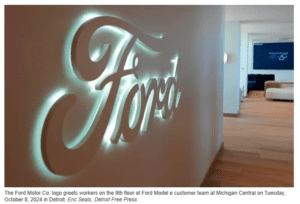Is Tesla Full Self Driving Level 2, or Level 4?

Since this blog was written, I teamed up with William Widen and did an deeper analysis of what Tesla told CA DMV and the relevant CA regulations.
Conclusion: Our analysis indicates that Tesla FSD beta is SAE Level 4. This builds upon the previous blog post below, but the article in the JURIST and associated SSRN article supersede the below, which is preserved only for historical context.
https://www.jurist.org/commentary/2021/09/william-widen-philip-koopman-autonomous-vehicles/
(update: Oct 1, 2021)
Original article is below.
—————————————————————————-
The technical crux of the Tesla “Full Self Driving” naming and marketing dilemma is SAE J3016 Section 8.2 (J3016 is the standard that defines the Levels.)
If the design intent for the Tesla FSD feature is to eventually operate without a human driver being required for safety, per SAE J3016 that makes it SAE Level 4 (“L4”) — even if today a human driver is required to ensure safety during beta testing.
That’s the same concept that applies to all the other L4 testers out there. Either you are deploying an L2 feature, or you are testing an L4 feature. The difference matters, and per J3016 on a technical basis you can’t have it both ways. (See Myth#10 https://users.ece.cmu.edu/~koopman/j3016/#myth10)
Tesla tells regulators they are SAE Level 2, which avoids Level 4 testing regulations. But an argument can be made based on public statements that their final production design intent for these vehicles is a no-driver-needed vehicle at SAE Level 4 or better. Consider the use of the name “Full Self Driving” (FSD) for a feature, some promotional videos, and forward-looking statements about robotaxi operation. (There is more, but it is not my purpose to exhaustively explore that here.)
Sure, FSD instructions say that a human driver needs to pay attention at all times — but that is true of both L2 production vehicles and L4 test vehicles. So, which is it?
Vehicle features with a Level 4 “production design intent” are Level 4 despite having a “test driver” who monitors and intervenes. It is incorrect to classify such a vehicle as Level 2. J3016 8.2 says:
The difference between L2 and L4 testing matters significantly with regard to safety. A key difference is the safety case argument strategy for being on the road. For L4 testing you should at least conform to SAE J3018 for a skilled safety driver. For L2 deployment you need to be acceptably safe with civilian drivers despite driver complacency. https://users.ece.cmu.edu/~koopman/pubs/koopman19_TestingSafetyCase_SAEWCX.pdf
I see two choices for Tesla:
(1) If Tesla tells regulators that they are SAE Level 2, that means they do NOT have production design intent to operate without continuous driver supervision, at least for FSD and Autopilot. If it is found that their advertising leads customers to believe they are buying an L4 test system but are being sold an L2 system, that might cause problems with the Federal Trade Commission, among others.
(2) If Tesla has production design intent to operate without a human driver supervising, then J3016 requires them to tell regulators using J3016 terminology that they are SAE Level 4. That would seem to run afoul of road testing regulations, such as in California, which impose special rules on L4 testers.
What I don’t see is any way that the same vehicle automation feature can be both Level 2 and Level 4 at the same time.
I personally prefer the Vehicle Automation Modes approach, which is more about driver responsibility and less about the technical internals of how the car is built. However, even if regulators and Tesla used that, they’d still need to differentiate between selling a Supervised production vehicle and an Automated test vehicle that requires trained safety driver intervention when it makes a mistake. https://safeautonomy.blogspot.com/2021/04/a-driver-centric-users-guide-to-vehicle.html
Given all the misinformation out there regarding SAE Levels, if you’re going to talk about SAE Levels, please do your best to get the nuances right. Yes, it’s complicated. Everyone struggles, including me, but at least check and try to avoid the various myths and misconceptions. For those who want to understand the details and myths of using J3016 Level terminology properly, see: https://users.ece.cmu.edu/~koopman/j3016/
For a higher level explainer video on SAE Levels and Automation Modes, see: https://youtu.be/Kykb75_41hY
(This is a technical analysis, not a legal analysis.)






